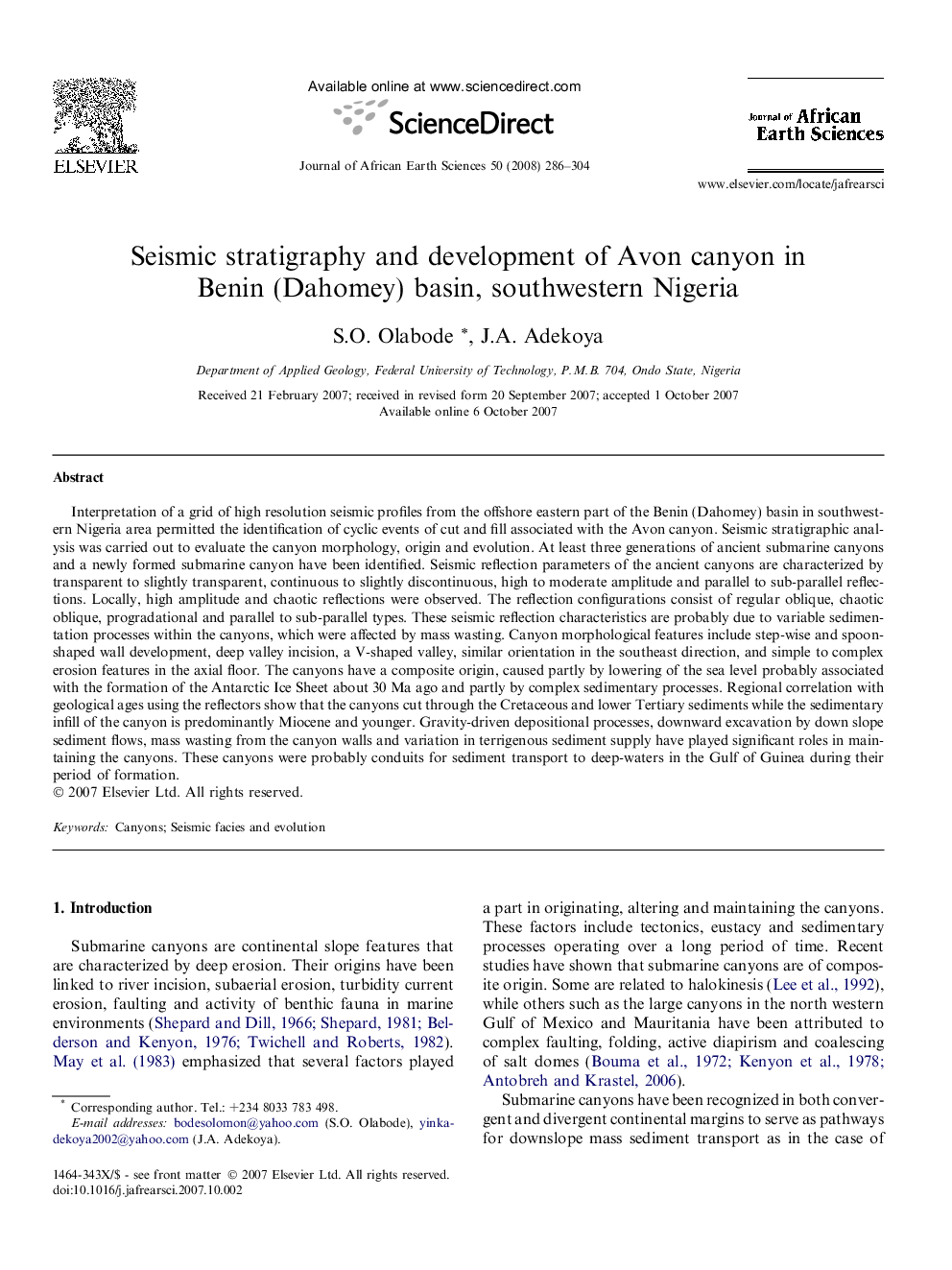| کد مقاله | کد نشریه | سال انتشار | مقاله انگلیسی | نسخه تمام متن |
|---|---|---|---|---|
| 4729324 | 1640256 | 2008 | 19 صفحه PDF | دانلود رایگان |

Interpretation of a grid of high resolution seismic profiles from the offshore eastern part of the Benin (Dahomey) basin in southwestern Nigeria area permitted the identification of cyclic events of cut and fill associated with the Avon canyon. Seismic stratigraphic analysis was carried out to evaluate the canyon morphology, origin and evolution. At least three generations of ancient submarine canyons and a newly formed submarine canyon have been identified. Seismic reflection parameters of the ancient canyons are characterized by transparent to slightly transparent, continuous to slightly discontinuous, high to moderate amplitude and parallel to sub-parallel reflections. Locally, high amplitude and chaotic reflections were observed. The reflection configurations consist of regular oblique, chaotic oblique, progradational and parallel to sub-parallel types. These seismic reflection characteristics are probably due to variable sedimentation processes within the canyons, which were affected by mass wasting. Canyon morphological features include step-wise and spoon-shaped wall development, deep valley incision, a V-shaped valley, similar orientation in the southeast direction, and simple to complex erosion features in the axial floor. The canyons have a composite origin, caused partly by lowering of the sea level probably associated with the formation of the Antarctic Ice Sheet about 30 Ma ago and partly by complex sedimentary processes. Regional correlation with geological ages using the reflectors show that the canyons cut through the Cretaceous and lower Tertiary sediments while the sedimentary infill of the canyon is predominantly Miocene and younger. Gravity-driven depositional processes, downward excavation by down slope sediment flows, mass wasting from the canyon walls and variation in terrigenous sediment supply have played significant roles in maintaining the canyons. These canyons were probably conduits for sediment transport to deep-waters in the Gulf of Guinea during their period of formation.
Journal: Journal of African Earth Sciences - Volume 50, Issue 5, March 2008, Pages 286–304